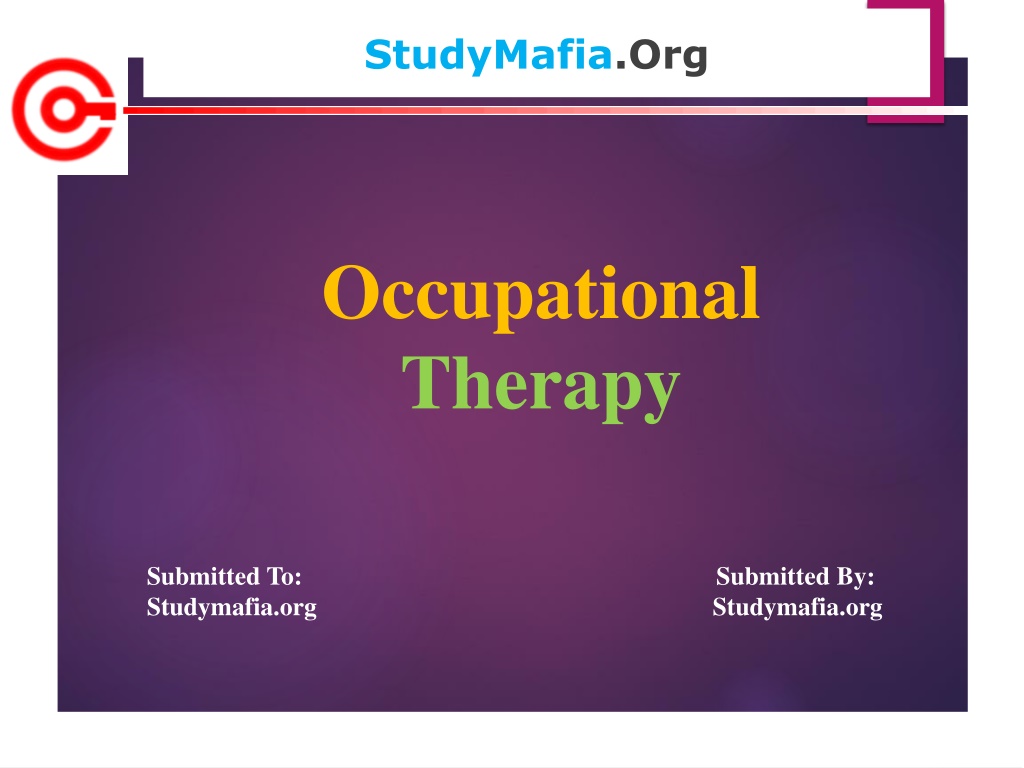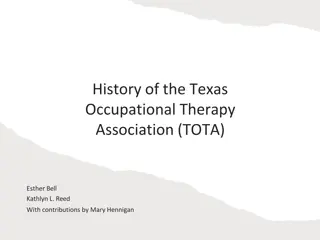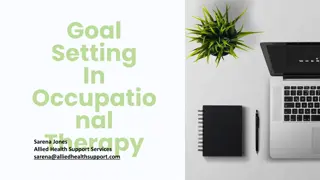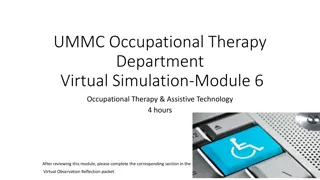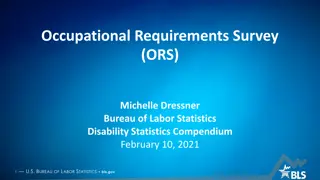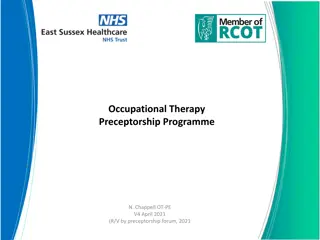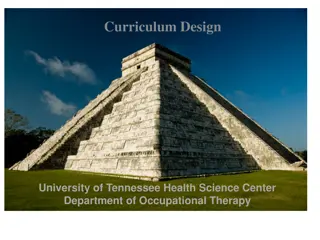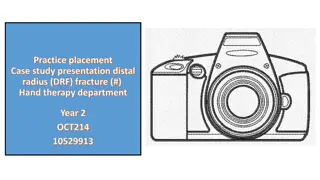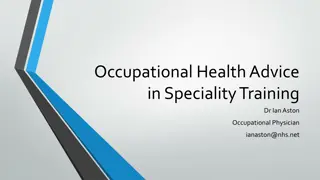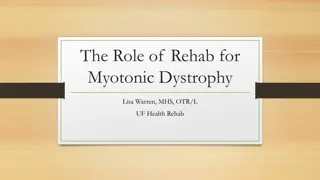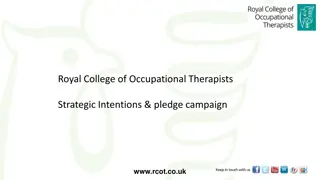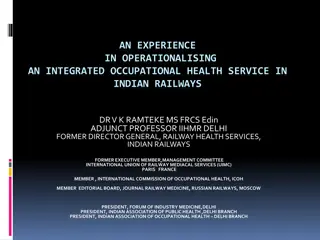Understanding Occupational Therapy: A Comprehensive Overview
Occupational therapy (OT) is a crucial branch of healthcare that focuses on helping individuals of all ages with physical, sensory, or cognitive challenges to regain independence in various aspects of their lives. This summary delves into the definition of OT, its practice areas, the significance of occupational therapy for kids, the diverse needs it addresses, and the individuals who benefit from this therapy. It highlights the role of occupational therapists in enhancing individuals' emotional, social, and physical well-being through everyday activities and specialized therapies.
Download Presentation

Please find below an Image/Link to download the presentation.
The content on the website is provided AS IS for your information and personal use only. It may not be sold, licensed, or shared on other websites without obtaining consent from the author. Download presentation by click this link. If you encounter any issues during the download, it is possible that the publisher has removed the file from their server.
E N D
Presentation Transcript
StudyMafia.Org Occupational Therapy Submitted To: Studymafia.org Studymafia.org Submitted By:
Table Contents Definition Introduction Occupational Therapy Practice Areas Occupational Therapy for Kids Need of Occupational Therapy Who Does Occupational Therapy Differences Conclusion 2
Definition Occupational therapy (OT) is a branch of health care that helps people of all ages who have physical, sensory, or cognitive problems. OT can help them regain independence in all areas of their lives. 3
Introduction Occupational therapists help with barriers that affect a person's emotional, social, and physical needs. To do this, they use everyday activities, exercises, and other therapies. OT helps kids play, improves their school performance, and aids their daily activities. It also boosts their self-esteem and sense of accomplishment. 4
Occupational Therapy for Kids Develop fine motor skills so they can grasp and release toys and develop good handwriting or computer skills. Improve eye hand coordination so they can play and do needed school skills such as bat a ball and copy from a blackboard. Master basic life skills such as bathing, getting dressed, brushing teeth, and self-feeding. 6
Occupational therapy for Kids Learn positive behaviors and social skills by practicing how they manage frustration and anger. Get special equipment to help build their independence. These include wheelchairs, splints, bathing equipment, dressing devices, and communication aids. 7
Need of Occupational Therapy Birth injuries or birth defects Sensory processing disorders Traumatic injuries to the brain or spinal cord Learning problems Autism Juvenile rheumatoid arthritis Mental health or behavioral problems Broken bones or other orthopedic injuries 8
Need of Occupational Therapy Developmental delays Post-surgical conditions Burns Spina bifida Traumatic amputations Cancer Severe hand injuries Multiple sclerosis, cerebral palsy, and other chronic illnesses 9
Who Does Occupational Therapy? Occupational therapist (OT): An OT has a 4-year bachelor's degree in a related field (such as biology, psychology, or health science) and a master's degree from an accredited occupational therapy program. Occupational therapist assistant (OTA): An OTA has an associate's degree from an accredited OTA program. They can carry out treatment plans developed by an OT but can't do patient evaluations. 10
Differences 11
Conclusion Occupational therapy has an important role to play in the care of people with a life-limiting illness. However, knowledge gaps remain concerning the scope of the role and how best to engage clients in meaningful occupations at the end of life. 12
References Google.com Wikipedia.org Studymafia.org Slidespanda.com
Thanks To StudyMafia.org
